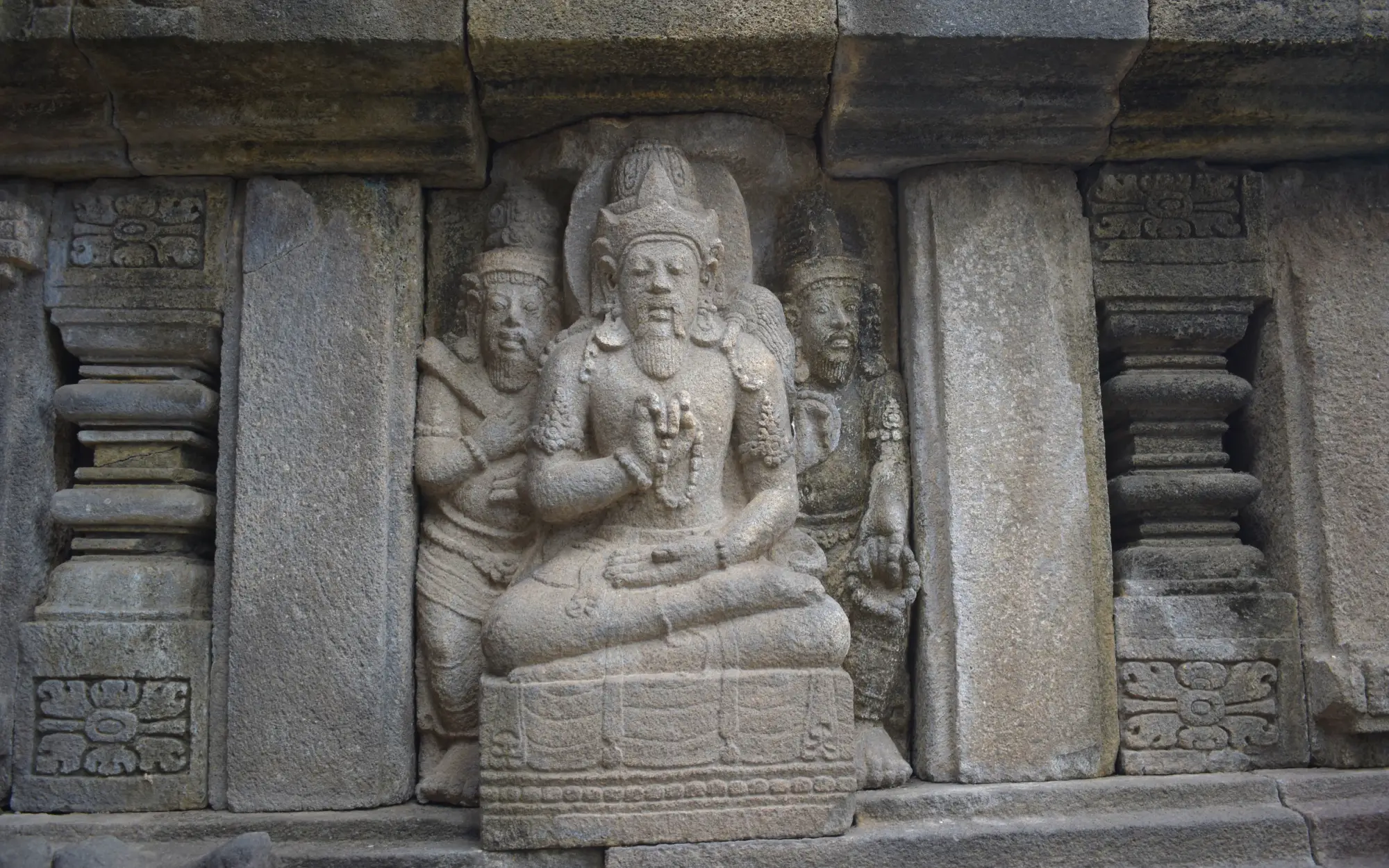
Exploring the grandeur of Prambanan, Yogyakarta's pinnacle of Hindu art and spirituality
Prambanan is one of the largest and most important Hindu temples in Indonesia. It is a magnificent temple complex located on the island of Java, near the city of Yogyakarta. The complex was declared a World Heritage Site by UNESCO in 1991. The temple is famous for its impressive constructions, being one of the best examples of Hindu architecture in Southeast Asia.
The construction of Prambanan began in the ninth century during the Sanjaya dynasty of the first Kingdom of Mataram in the region of Central Java, probably in response to Borobudur of the Buddhist Sailendra dynasty. Erected in honor of the Hindu gods Shiva, Vishnu and Brahma, Prambanan is composed of three main temples dedicated to each of these gods, which are surrounded by other smaller temples. In total, the complex has more than 200 temples which, as a whole, are dedicated to the so-called Hindu Trimurti; the expression of God as the Creator (Brahma), the Preserver (Vishnu) and the Destroyer (Shiva).
The temple dedicated to Shiva is the largest of all and has a main tower almost 50 meters high. This tower is decorated with beautiful sculptures of the life of Shiva and his followers. The Vishnu temple, although smaller than the Shiva temple, is equally impressive. The temple has a main tower 33 meters high and is decorated with motifs from the life of Vishnu. The Brahma temple is the smallest of the three and has a main tower 21 meters high.
With a remarkable architecture decorated with intricate bas-reliefs and sculptures, the Prambanan temple complex is an archaeological visit not to be missed, on a par with Borobudur.

Details of carved reliefs in the Prambanan temples.
The architecture of the complex follows the typical traditions of Hindu architecture based on the Vastu Shastra. In its design, provisions of the mandala temple plan were incorporated as well as the tall spires typical of Hindu temples. The whole compound is structured in three concentric zones, as well as each of the temples are structured vertically, following the hierarchy from the less sacred realms to the most sacred; called Bhurloka, Bhuvarloka and Svarloka respectively. In the center of the complex is a large square surrounded by smaller temples. This square is the place where religious and cultural ceremonies are held in honor of the Hindu gods.
Bhurloka represents the lowest realm of the common mortal; humans, animals, and also demons. Where humans remain anchored to their baser instincts. This realm is symbolized in the outer courtyard and at the base of each temple. The next, Bhuvarloka, corresponds to the middle realm of the holy people, occupied by rishi, ascetics and lesser gods. It is where the light of truth begins to be seen; whose realm is represented in the central courtyard and body of each temple. Finally there is Svarloka, the highest and holiest realm, reserved for the gods. It is symbolized in the inner courtyard and roof of each temple.
The roofs of the temples of Prambanan are adorned and crowned with the so-called Ratna; the Hindu counterpart of the Buddhist stupa that serves as a pinnacle. The concept of Ratna, moreover, means jewel in Sanskrit. The temples are decorated with narrative bas-relief panels that tell the story of the Hindu epic Ramayana and the Bhagavata Purana. The bas-relief narrative panels were carved along the interior balustrades of the gallery surrounding the three main temples. The ensemble was designed to mimic Meru, the sacred mountain, the abode of the Hindu gods and the home of Shiva. The entire temple complex is a model of the Hindu universe according to Hindu cosmology.
This temple complex, an exceptional example of Hindu architecture, was mysteriously abandoned after being used and expanded for almost a century. Its ruins suffered an earthquake in the 16th century, remaining forever in the memory and consciousness of the Javanese inhabitants. The temple attracted international attention in the early 19th century, during the short-lived British occupation of the Dutch East Indies, prompting its study and excavation. Today, the Prambanan Archaeological Park manages the temple complex, also organizing guided tours to discover this fabulous Hindu complex on the island of Java.
Welcome to Indonesia!
Share this Sight with: